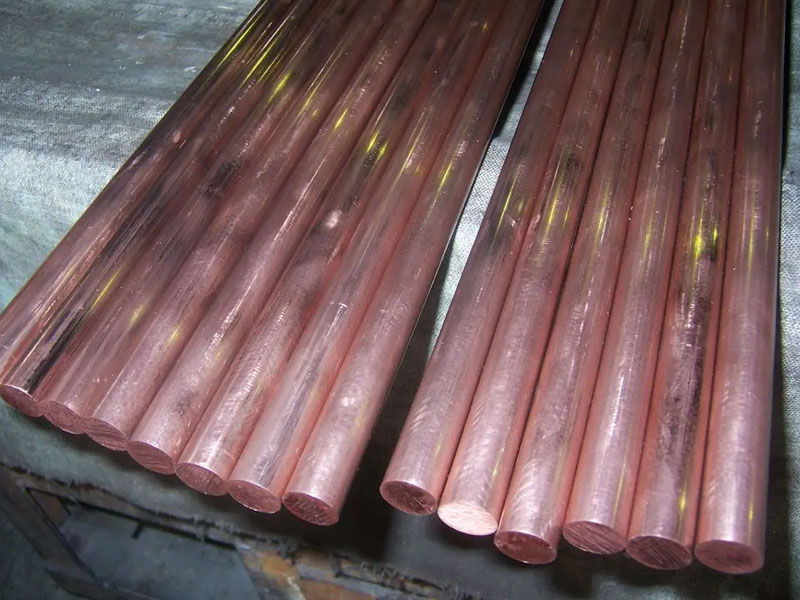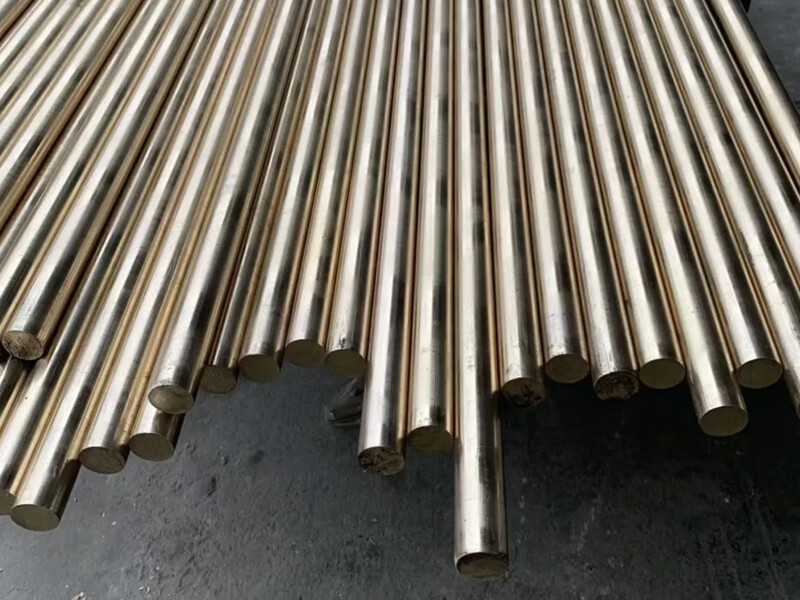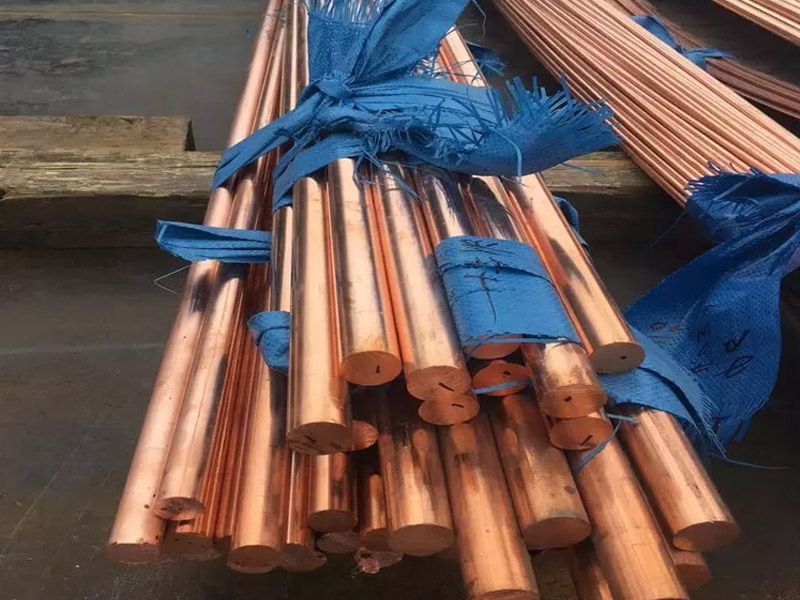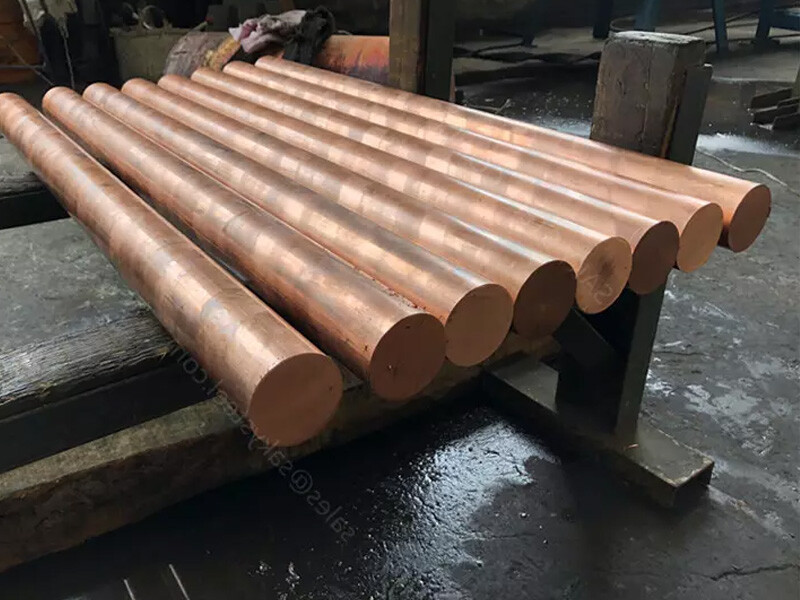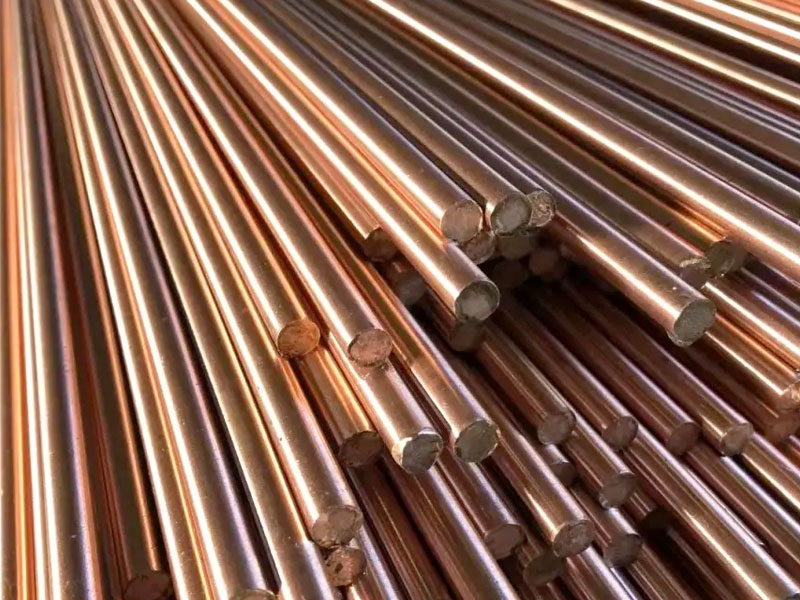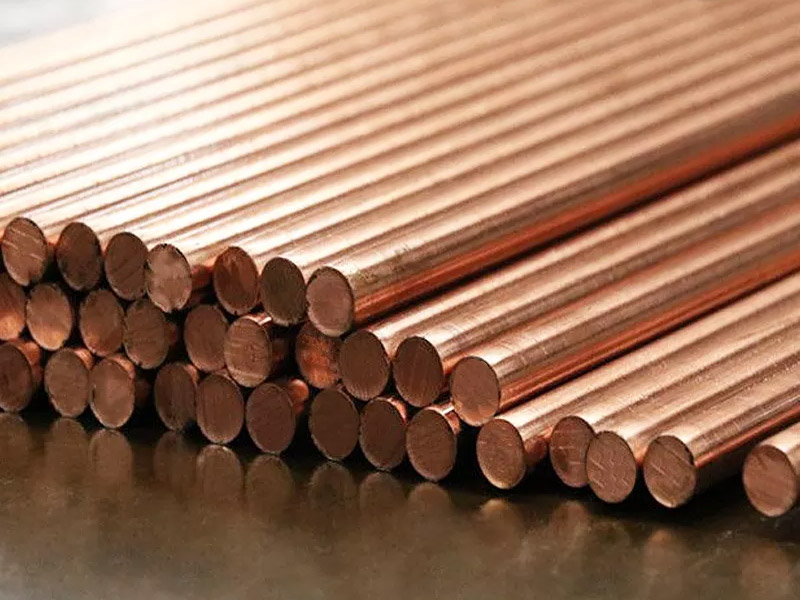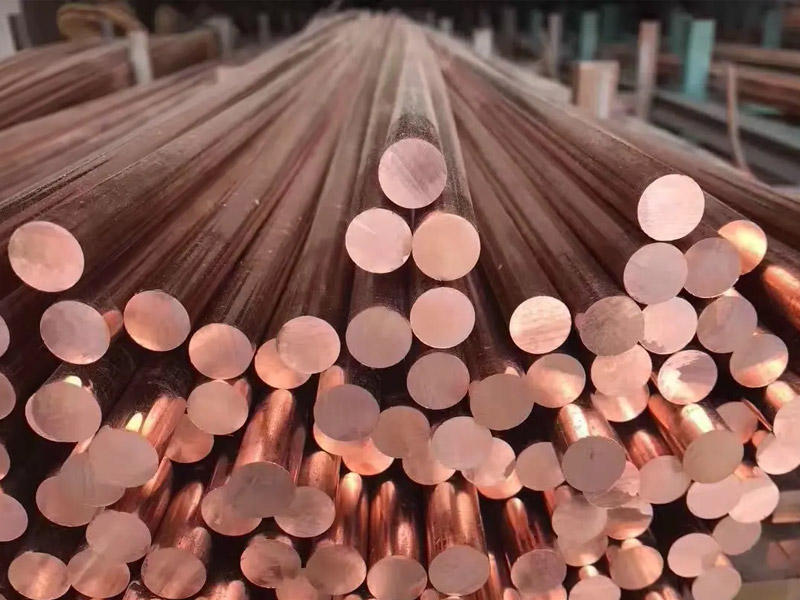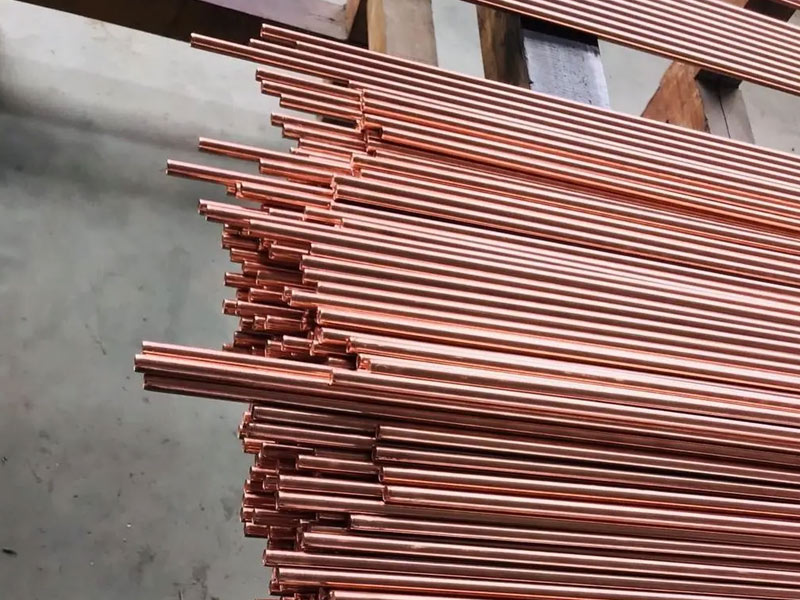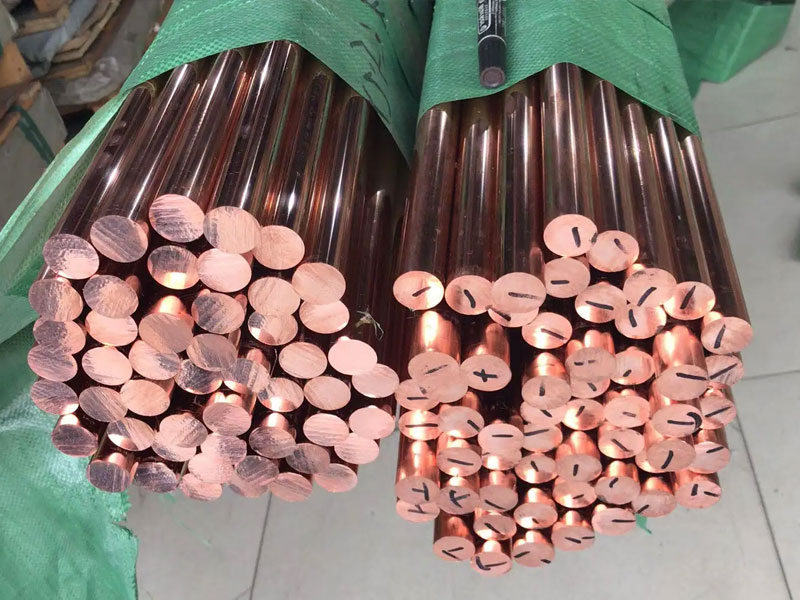Dimensional Specifications for C17300 Rod
C17300 rods are available in a wide range of sizes to meet industrial requirements. Below are typical dimensions:
- Heat Treatment States:
- TD04 (Solution-Treated + Cold Worked): Tensile strength 630–920 MPa, hardness HRB 92–103 .
- TH04 (Aged): Tensile strength 1,260–1,590 MPa, hardness HRC 39–45 .
International Standards
C17300 complies with multiple global standards to ensure quality and interoperability:
- ASTM B196/B196M: Specifies requirements for copper-beryllium rods and bars, including C17300 .
- MIL-C-21657: U.S. military standard for beryllium-copper components .
- EN 12164 (CuBe2Pb): European designation for leaded beryllium copper .
- YS/T 334—2009: Chinese standard for beryllium-copper rods, aligning with ASTM tolerances .
Chemical Composition
C17300 is a high-performance beryllium copper alloy primarily composed of copper (Cu) with controlled additions of beryllium (Be), lead (Pb), cobalt (Co), and nickel (Ni). The precise composition ranges are as follows:
Key Features:
- Free-Machining Design: The addition of Pb (0.2–0.6%) significantly improves machinability (up to 50% better than C17200), making it ideal for precision parts like connectors and springs.
- High Purity: Cu + Be + Ni + Co + Fe ≥99.5%, ensuring consistent performance in critical applications.
Mechanical Properties
C17300 exhibits exceptional mechanical properties, particularly after heat treatment (e.g., solution annealing and aging). Typical values include:
Heat Treatment Effects:
- Aged Condition: Tensile strength can reach 1,130 MPa (164,000 psi) with reduced elongation (≥3%), ideal for high-stress applications.
- Solution Annealed: Softens the alloy for forming, followed by aging to restore strength.
Physical Properties
High Conductivity: Suitable for electrical connectors and thermal management systems.
Fabrication and Processing
- Cold Working: Excellent cold formability for stamping, bending, and drawing.
- Hot Working: Performed at 774–802°C (1,425–1,475°F) to avoid cracking.
- Machinability: 20% of UNS C36000 brass; improved by Pb content.
- Welding: Not recommended for oxy-acetylene welding; use shielded methods like TIG.
C17300 copper rod production process
1. Melting and casting process
The production of C17300 copper rod uses scrap copper as the main raw material, and is efficiently recycled through electric furnace melting. The melting temperature is controlled between 1050°C and 1400°C. The specific process includes:
Sorting and pretreatment: The scrap copper is packaged after manual sorting to remove impurities and ensure uniform composition.
Smelting and slag removal: Add slag removers (such as silicates) to remove oxide slag, and reduce hydrogen residues through nitrogen degassing to improve alloy purity.
Composition adjustment: After smelting, the copper water is analyzed twice, and alloy elements such as electrolytic copper and cobalt are added to meet the requirements of ASTM B196 standard.
Electroslag remelting: Some processes use secondary smelting in an electric slag furnace (1700°C) to further remove impurities and refine grains to improve material density.
2. Rolling and forming technology
Extrusion and rolling: forward/reverse extrusion process, combined with pass rolling or planetary rolling, to ensure the cross-section accuracy of the bar; special die design solves the die wear problem caused by high beryllium content.
Stretching process: cold drawing the billet through a chain or hydraulic stretching machine, the dimensional accuracy can reach ±0.05mm, and the surface roughness Ra≤0.8μm.
Composite process path: the typical process is "pressing-rolling-stretching-annealing-finishing", taking into account both efficiency and performance optimization.
3. Heat treatment process
Solution treatment: 780-820°C insulation for 1-2 hours/25mm thickness, then water quenching to form a supersaturated solid solution and eliminate processing stress.
Aging strengthening: insulation at 320°C for 2-4 hours, BeCu phase nanoparticles are precipitated, the tensile strength is increased from 920MPa to 1590MPa, and the hardness HRC reaches 39-45.
Oxygen-controlled environment: treatment under vacuum or nitrogen protection to avoid surface oxidation and performance degradation.
4. Surface treatment technology
Passivation treatment: Activate the surface with nitric acid-sulfuric acid mixed pickling, and then electrochemical passivation to form a dense oxide film, which can withstand 500 hours of corrosion-free salt spray test.
Functional coating: For electrical applications, tin plating (conductivity loss <5%) or organic protective film coating (maintain natural color) can be selected.
Product advantages of C17300 copper rod
1. Excellent physical properties
Electrical and thermal conductivity: electrical conductivity 18-50% IACS, thermal conductivity 110 W/(m·K), with high conductivity and heat dissipation capacity, suitable for high-density electronic packaging.
Thermal stability: thermal expansion coefficient 17×10⁻⁶/°C (20-200°C), dimensional stability at high temperature is better than phosphor bronze.
2. Outstanding mechanical properties
Strength and elasticity: The tensile strength after aging reaches 1260-1590MPa, and the elastic modulus is 13400 kg/mm², which is suitable for high-load springs and diaphragm box elements.
Wear resistance: Hardness HRC 39-45, friction coefficient is 40% lower than brass, and service life is extended by more than 3 times.
3. Processing performance advantages
Cutting performance: Contains 0.2-0.6% lead to form fine chips, tool life is extended by 50%, and it is suitable for precision machining on automatic lathes.
Forming adaptability: The cold processing rate can reach 80%, supporting complex cross-section extrusion; hot processing is limited to 650-800°C hot extrusion to avoid hot brittleness.
4. Diversified application scenarios
Electronic industry: RF connectors, PCB test probes (relying on high conductivity and elasticity).
Mold manufacturing: injection mold inserts, die-casting punches (outstanding high temperature wear resistance).
Special equipment: explosion-proof tools (spark-free characteristics), aerospace bellows (excellent fatigue resistance).
Q1:Do you provide samples? Is it free or extra?
A1:Yes, we can provide samples free of charge and the customer will pay the freight.
Q2:What if I don't have export experience ?
A2:We have reliable forwarder agent which can ship items to you by sea/air/Express to your doorstep. Any way, we will help you choose the most suitable shipping service.
Q3:How long is your lead time?
A3:If it is in stock, it is usually 5-10 days. Or, if there is no inventory, 15 days, depending on the quantity.
Q4:What are your terms of payment?
A4:30% T/T deposit in advance, 70% T/T balance within 5 days after B/L copy, 100%.Irrevocable L/C at sight, 100% Irrevocable L/C after receive B/L 30-120 days, O/A.
Q5:How is your technical support?
A5:We provide lifetime online support through Whatsapp/ Skype/ Wechat/ Email. Any problem after delivery, we will offer you call anytime.
Welcome To Your Inquiry
What can we help you?
RELATED PRODUCTS

